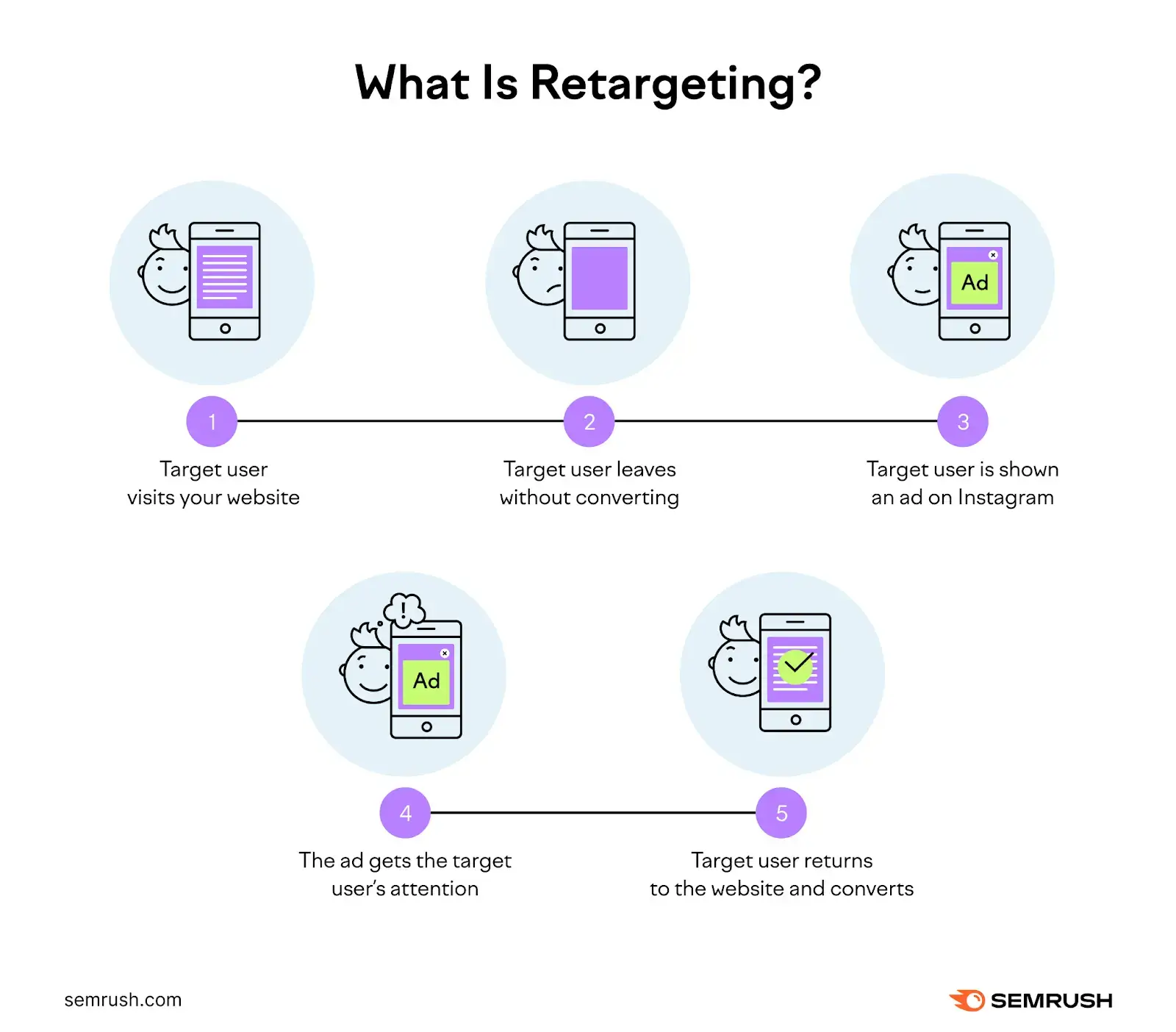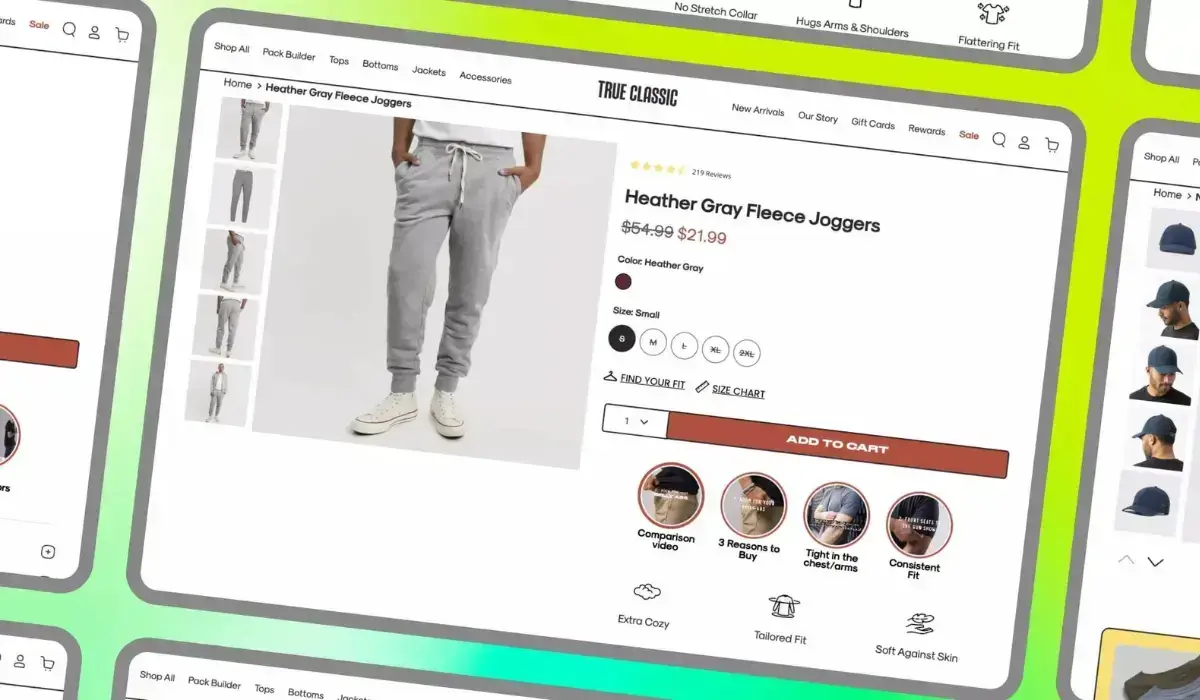According to Shopify, the leading eCommerce platform, the average conversion rate for e-commerce sites is between 2.5% and 3%.
*Updated 6/2/2024
If you own a growing online business, consider this figure as a baseline target, but likely you are aiming for much higher than that.
With the correct strategy and a fully optimized website, converting more customers into buyers and increasing profit margins is a realistic goal.
This article will focus on the top 5 most effective eCommerce tips for boosting customer conversions and maximizing sales.
We will explore the power of personalized strategies, retargeting, loyalty programs, and more to create a bespoke user experience for each customer.

What Causes Low ECommerce Conversion Rates?
There are many reasons why an eCommerce site may be underperforming, from a lack of accessibility to poorly optimized content.
According to Hotjar, a whopping 70% of eCommerce website users abandon their carts, with many business owners failing to take the necessary measures to rectify the issue.
This process is similar to app deployment or another software project—you must set KPIs, establish pipelines, and use a sprint-based approach.
It just so happens that the average eCommerce site isn’t run this way. Hence, they run into issues like:
- Product pages aren’t engaging. These days, the bare minimum for product pages is high-quality images and detailed descriptions. Users need to be engaged further with videos, product reviews from key influencers, and 3D overviews.
- The website’s search functionality is not fit for purpose. A Poor search experience, especially on mobile devices, can significantly impact conversions. Many users will immediately leave a website if they cannot quickly find the products they are interested in.
- Customers can’t access discounts. A website may offer many discounts, but sometimes, they can be hard to find, and many customers are unaware of them. Promote discounts via banners on key pages for maximum visibility.
- The brand isn’t trustworthy. New brands can find it difficult to establish themselves as trusted businesses as they may lack user reviews to reassure new customers.
- There is no retargeting strategy. Ecommerce websites that do not have a retargeting strategy are missing out on potential sales. Users who have previously shown interest in a product may only require a subtle nudge to complete a sale.
Poor customer journeys and a lack of shopping assistance. For example, some customers may need help finding what they’re looking for in a physical store.
Products should be easy to find, the site’s navigation should be straightforward, and consider adding features such as AI-powered chatbots.
5 Best Tips to Get More ECommerce Sales
Successful eCommerce requires time and effort, effectively using available data and innovative tactics to turn users into customers.
Unfortunately, there are no quick fixes to increase conversion rates. However, these five eCommerce tips will get you headed in the right direction.

1. Segment and personalize
To create effective marketing campaigns, you need to arrange your customers into different groups based on their buying preferences, demographics, and purchase history. This is called customer segmentation.
Doing so allows businesses to create targeted marketing campaigns, such as email marketing, and personalized, targeted content for this specific group, increasing the chances of success.
When organizing customers into groups based on their purchase history, you can consider factors such as how frequently a customer makes a purchase or their average spend.
For example, create an email marketing campaign that promotes higher-value products to customers who historically have a higher-than-average spend.
Regarding behavior, create a user group for customers who have abandoned their shopping cart, with retargeting ads created. Alternatively, you could offer discounts to people who live in a particular location if an analysis shows your website generates high traffic from a specific region.
You can create unlimited customer segments, with groups designated for new customers or those who haven’t purchased for some time.
Finding a winning formula may require some experimentation, so I recommend using A/B testing to determine what works and what doesn’t.
2. Implement a retargeting strategy

Source: Semrush
Reconnecting with old customers or users who have previously visited your website is essential for boosting conversion rates.
Retargeting past users can be done via tailored pay-per-click (PPC) ads that remind users of products they browsed, but, as always, make sure you don’t overdo it with the personalization.
Google Ads is the most popular PPC platform, but social media platforms also have their own PPC options that may be more suited to your needs.
PPC ads should be visually appealing and displayed infrequently so as not to become annoying. PPC ad campaigns should also be continuously optimized for maximum results and an optimal return on investment.
Email marketing is also a common way of re-engaging with previous customers. You could send a personalized email offering incentives, such as a discount, to entice lapsed users back to your website.
Emails could also be designed around new or future products, offering exclusive access before they reach general sales.
3. Interactive product pages

Source: Videowise
Ecommerce product pages have evolved significantly in recent years, offering much more than the standard description, specification, and images.
Many eCommerce websites now build their product pages around user-generated content, displaying recent reviews and social media posts posted by happy customers.
This helps strengthen your brand as a trusted retailer while also helping potential customers learn more about a product to help them decide.
Product videos are also powerful tools for increasing conversion rates. They show the product in action rather than relying on static, sometimes misleading images.
4. Establish a customer loyalty program
Customer loyalty programs are a fantastic way to reward customers and encourage them to continue making purchases in the future. Why?
Encouraging repeat purchases is one of the easiest ways to boost conversion rates, as you target users who have already been happy to buy products from your website.
Plus, you can always learn from other successful eCommerce strategies for customer loyalty and apply one or more of the following:
- Reward points—Points awarded to users every time they make a purchase can be redeemed for discounts or gifts once they have accumulated enough.
- Reward levels—A level-based reward system can be a great way to encourage customers to spend more. The more customers spend, the higher their level rises, giving them access to discounts or benefits such as exclusive access to products.
- Refer a friend—Whenever a customer refers a friend, and that friend makes a purchase, the referrer can benefit from a cash reward or generous discount, making them more likely to refer more friends and family.
- Personalized rewards—Base your personalized rewards on a customer’s purchase history, but with the proliferation of AI, you can integrate multiple data sources and evoke feelings of trust and appreciation.
- Gamification—Integrates gaming elements such as badges and achievements activated whenever a customer makes certain purchases or spends above a certain amount. This practice is proven to increase engagement and boost customer loyalty in a fun and non-intrusive way.
5. Create a high-quality shopping experience
An eCommerce website with an impeccable user experience will have fast page loading speeds, simple navigation, high-quality search functionality, a straightforward checkout process, and even digital signature features.
Modern eCommerce platforms are taking things further and providing customers with intelligent shopping systems, such as chatbots that use generative AI to enhance customer support.
Using clever algorithms and natural language processing (NLP), AI-powered virtual assistants can guide users and offer real-time customer support to help them navigate the website and find the product they are looking for.
A user can simply click the chatbot function, type a query, and instantly receive a relevant and helpful response. The approach brings results—AI chatbots can increase average order values and conversion rates by up to 33%.
Try Shift4Shop to launch your eCommerce business today.
Set High Standards for Your ECommerce Store
Ecommerce is multi-faceted and requires business owners to analyze and reevaluate their processes continuously.
From user experience to marketing campaigns, even the tiniest oversight can impact conversion rates.
While no solution is guaranteed to work, applying the five eCommerce conversion tips we mentioned can help you move in the right direction and find the right solution for your conversion problems.
Author Bio
Shanice Jones is a techy nerd and copywriter from Chicago. For the last five years, she has helped over 20 startups building B2C and B2B content strategies that have allowed them to scale their business and help users around the world.



